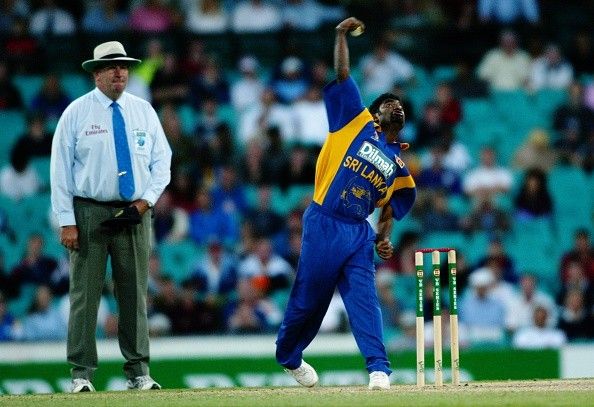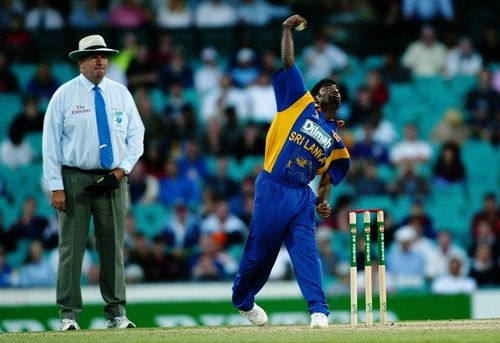
Why was Muralitharan's bowling action considered legal?
Muttiah Muralitharan’s bowling action has for long been a very controversial topic which has divided the opinion of players and cricket experts alike. While many consider that his action can be explained by his physical deformities, there are others who argue that one cannot bend and change the rules of the game to suit particular bowling styles and individuals.
However, if one looks at the official word on the Sri Lankan bowler’s action, it has been cleared multiple times and was also declared to be a legal one. The ICC, who had conducted multiple tests on his action, the first of which was done in the University of Western Australia, found no evidence of chucking whatsoever.
Darell Hair no-balls Muttiah Muralitharan in MCG Test, 1995
The first instance of his action seeming illegal came about when Muralitharan bowled against Australia in an away test series in 1995.
The off-spinner was no-balled seven times by Australian umpire Darrel Hair which in turn created a huge furore, with the Sri Lankan captain Arjuna Ranatunga threatening to take his players off the field. The game continued later on, although relations between the two teams soured due to the event.
The bad blood between the two sides took years to clear after this incident.
First testing in 1996 and proof of legality
Muralitharan's bowling action was cleared by the ICC after biomechanical analysis at the University of Western Australia and at the Hong Kong University of Science & Technology in 1996. The tests led to the conclusion that his action created the 'optical illusion of throwing'.
It was stated that the illusion of chucking was created by the freakish rotation of his wrist above an elbow that could not straighten. The tests proved that his elbow could not straighten due to a congenital problem, and it created the illusion of Murali throwing the ball.
Dr Ravindra Goonetilleke, assistant professor at the Hong Kong University of Science and Technology said, “The tests prove Muralitharan's off-spin, which was the more suspect, is not a throw, and the leg-spin, which wasn't really questioned, is also not a throw.”
Goonetilleke also said the tests, which saw Murli bowl for "four to five hours" a day, proved that the chucking allegation was purely an illusion due to his "bent" arm.
“Using an instrument for measuring posture which identifies repetitive strain injuries, the spinner bowled between 30-50 overs with electronic wiring strapped to his elbow, fingers and around his wrist.”
"The device recorded 500 angles and 500 force values per second from the finger and elbow," Goonetilleke said. "The information was downloaded into a computer and it shows, according to the (the game's) law, he is not throwing."
Questioning by ex-players and contemporaries
However, there still were doubts and questions raised about his bowling action from time to time.
Some ex-cricketers like Bishan Singh Bedi from India even ridiculed his action, saying he was not a bowler but a javelin thrower. Amongst his contemporaries, people like Adam Gilchrist voiced concerns about the legality of his action.
Murali has himself tried to clear doubts about his action, agreeing many times to subject himself to various tests. However, he disregarded the comments made by everyone and continued to take all of this in his stride, breaking one bowling record after another to become the most successful bowler in both Test cricket and the ODIs while also leaving a lasting legacy behind.
Doubtful bowling actions these days
In recent times, ICC has banned many current players with doubtful bowling actions including Pakistan off-spinner Saeed Ajmal, Pragyan Ojha from India, and many other young bowlers.
Murali has himself supported this clean up and has backed the ICC drive to cleanse the game. Despite all the allegations and chucking charges Murali faced throughout his career, he never buckled and always co-operated with the authorities to check his action, and in the process also helped provide new technology to cricket to test bowling actions.
It changed the way cricket used technology to check the validity of bowling actions. The ICC must involve him and other such stalwarts of the game to cleanse the game and help develop fair bowling actions for the new crop of young bowlers, otherwise the problems with illegal bowling actions will continue long into the future

